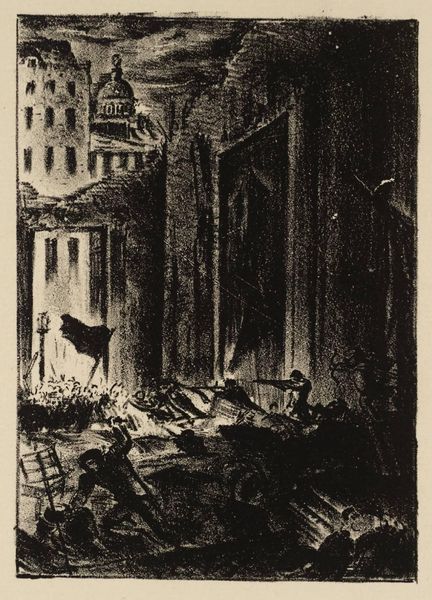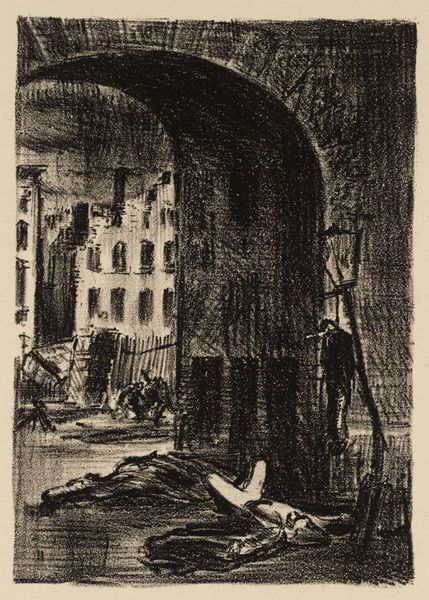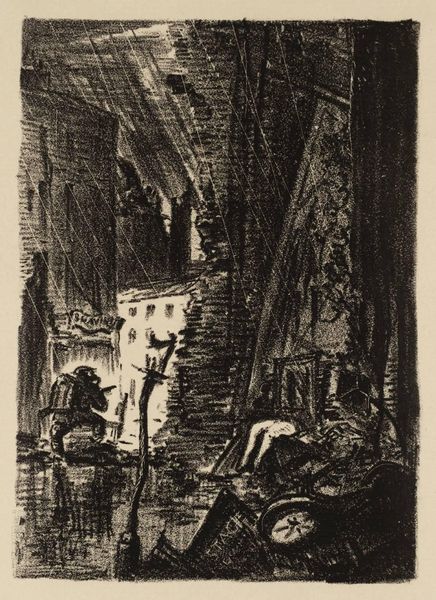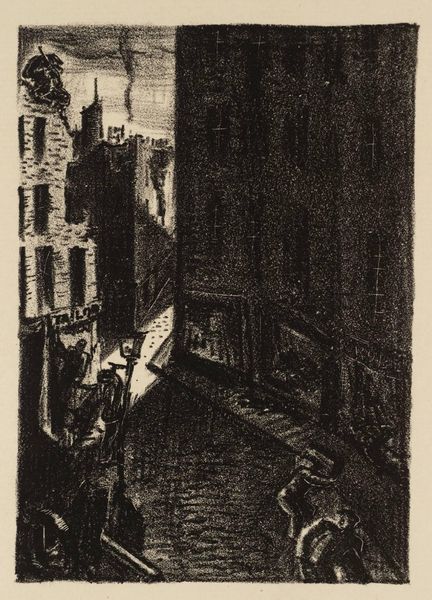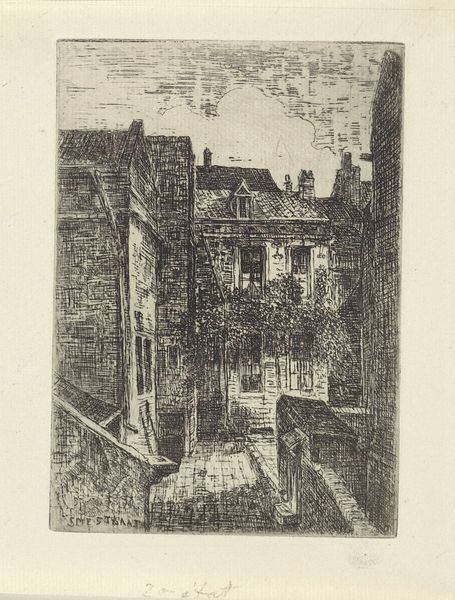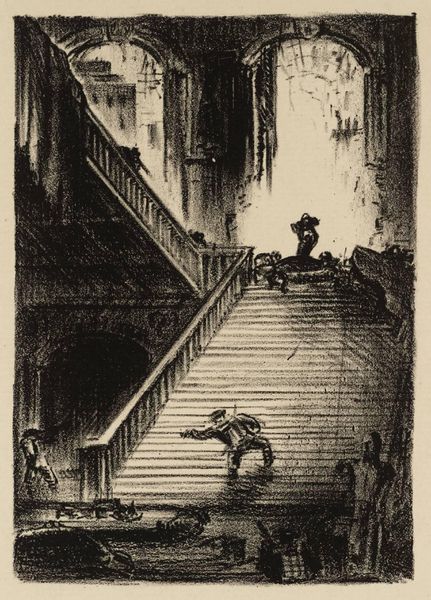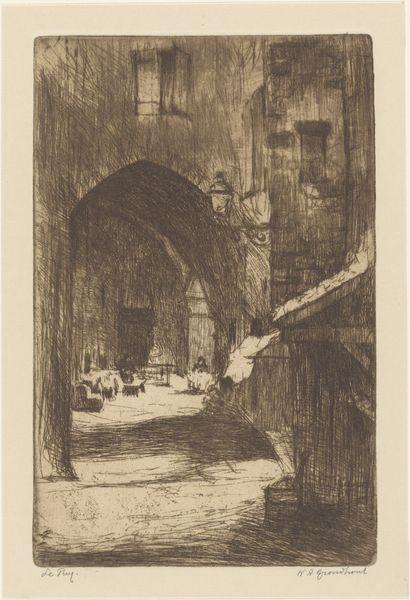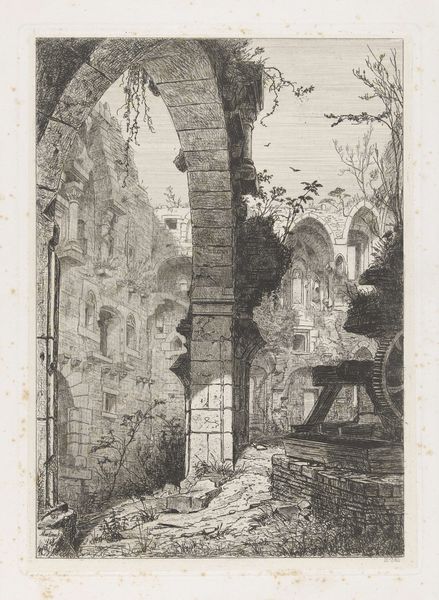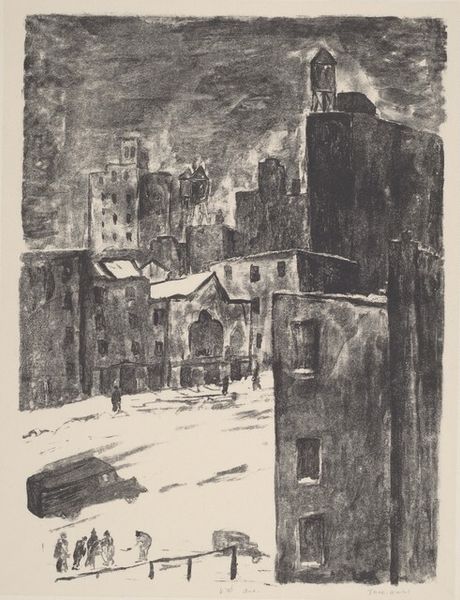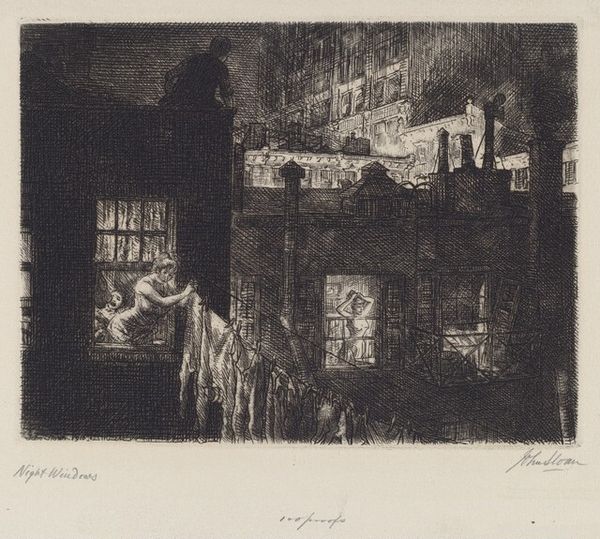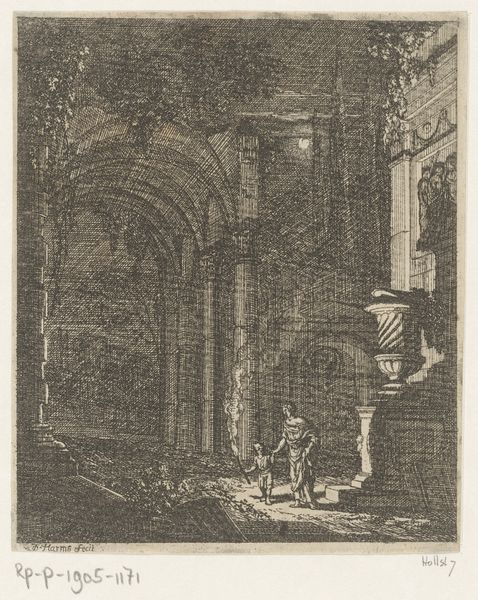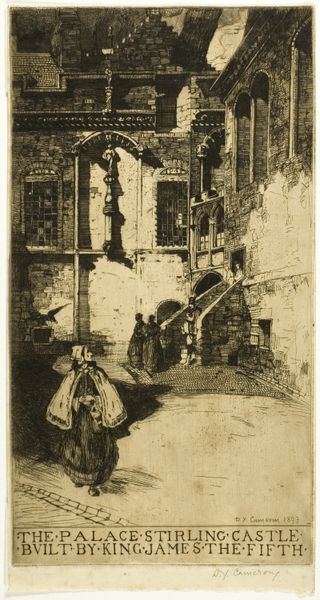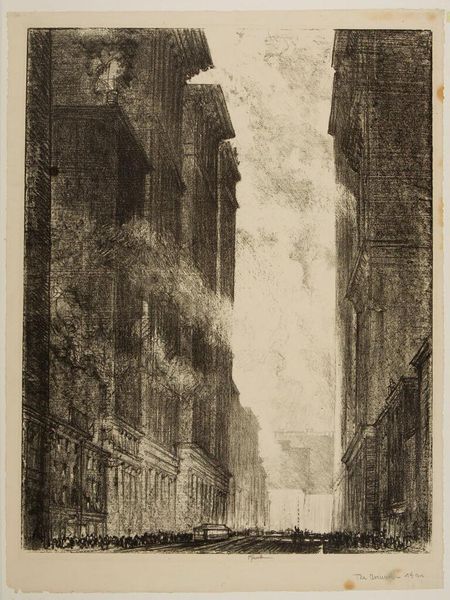
Dimensions: image: 133 x 95 mm
Copyright: © The estate of James Boswell | CC-BY-NC-ND 4.0 DEED, Photo: Tate
Editor: This is James Boswell's "The Fall of London: London Bridge," currently at the Tate. It's a somber print, the bridge looming almost menacingly. What can you tell me about it? Curator: The title "The Fall of London" is certainly evocative. It suggests a critical view, perhaps of the city's socio-political landscape, reflecting anxieties about modernization or the consequences of war, given Boswell's lifetime. How does the composition contribute to this feeling? Editor: The stark contrast and skewed perspective make it feel unstable, almost like it's collapsing inward. Curator: Exactly. The print’s dark tones and dramatic composition might be a critique of the city's rapid changes and their impact on its cultural identity. Editor: I hadn't thought about the social commentary! Curator: Art often operates within a broader cultural context. By understanding the forces shaping artistic creation and reception, we can uncover layers of meaning that might otherwise be missed. Editor: That's a great point. I'll definitely consider that perspective moving forward.
Comments
tate 6 months ago
⋮
http://www.tate.org.uk/art/artworks/boswell-the-fall-of-london-london-bridge-p11659
Join the conversation
Join millions of artists and users on Artera today and experience the ultimate creative platform.
tate 6 months ago
⋮
This is one of eight small lithographs Boswell made in 1933 describing The Fall of London. Ron Heisler believes that they were originally conceived for a book by Frank McIlraith and Roy Connolly called Invasion From The Air which describes a Fascist invasion of England (information from Ron Heisler, August 2003). The theme of the book, which was published in 1934, is reminiscent of Boswell’s prints, which illustrate both popular uprisings in the City of London and horrific scenes of the city in ruins. This dark and forbidding image portrays London Bridge from the south bank of the River Thames. The towering arches and smoke from the burning buildings dominate the scene. St Paul’s Cathedral, symbolic of the power of London, is visible in the background and, in this image, is surrounded by crumbling, war torn buildings. The arms of a dead body hang over the rubble washed up on the bank of the river .
